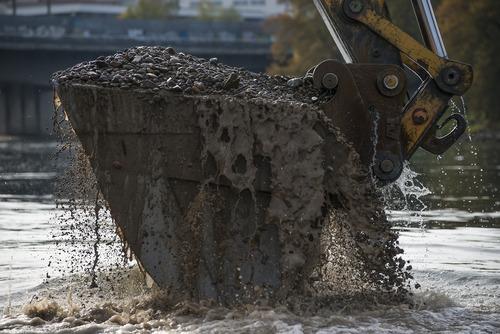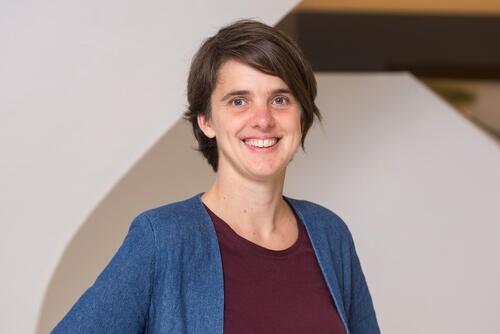Overflow dredging sludge is sludge that is removed from ditches and canals in the vicinity of a sewage overflow. Often, this sludge is polluted because in case of heavy rainfall the sewage water and sludge will flow into the overflow simultaneously. Annually, the cost of the removal and transportation of dredging sludge that is potentially polluted is very high. Therefore, the Water Board Noorderzijlvest, commissioned Bioclear earth in cooperation with Microbial Analysis to investigate the safety of recycling the sludge in a sustainable way. For the water board it is important to know how quickly pathogenic microorganisms and drug residues disappear from the sludge.
Do the pathogens and drug residues degrade naturally?
For the purpose of this research, two depots have been built at the former sewage treatment plant In Uithuizen. One depot was filled with ‘clean’ (reference) dredging sludge and the other with overflow dredging sludge. Sustainable recycling of this ‘clean’ sludge is already permitted as a part of the Waterbed Policy Plan of 2017-2027, determined by the Water Board Noorderzijlvest.
During 11 months we investigated the effect of dehydrating the sludge on the pathogenic microorganisms. The dehydration has been achieved by drainage and the exposure to sunlight and wind. By reducing the moisture content in the top layer and changing the circumstances from an oxygen-rich to a low-oxygen environment, hypothetically the living conditions for the bacteria should deteriorate. In addition, we have researched whether the concentrations of several drug residues are decreasing due to the chemical and biological processes in the depot.

Answers based on DNA technology
To answer the question whether pathogens can cause problems if the dredging sludge is reused, it is important to determine whether it contains pathogens that are still viable. Normally, culturing methods are used for such issues. However, culturing of sludge samples is very difficult. Therefore we use DNA-technology. Usually, we measure all present species, both alive and dead with DNA-technology. As the dead material is not relevant in this case, we have looked for a method that only determines the living fraction. The innovative DNA-analysis method vPCR (viable PCR) is mostly applied to analyse water samples. We have adjusted this method so it can be applied to sludge samples as well. Due to this development, we can now apply the method to various solid matrices (soil, sludge, pulp).
For this reason, we were able to determine if, and how many viable pathogens were present in the sludge. During this pilot research, monitoring was conducted by analysing sludge samples at various dates using the vPCR method.
Outcome: substantial savings
Based on the results of our vPCR-analysis on pathogenic bacteria and the chemical analysis performed by Eurofins and Aqualysis on the presence of drug residues, we can conclude that the differences between overflow sludge and ‘clean’ sludge are virtually nil. This means, that the usage of overflow sludge does not create greater risks. Therefore, safe recycling of the soil in order to raise dikes and construct roads is possible. This provides a considerable cost reduction for the water board.
The results of this pilot research can be used as a basis for research on overflows in other locations. But every overflow requires customized research. More pilots and more research at other locations will provide more practical experience and information. Based on these new pilots, a new national guideline concerning the use of sewage overflow dredging sludge can be determined. This pilot is a first step to this new guideline.

Would you like to know more about this subject or the applications of vPCR, please contact Elsemiek Croese,
croese@microbialanalysis.com